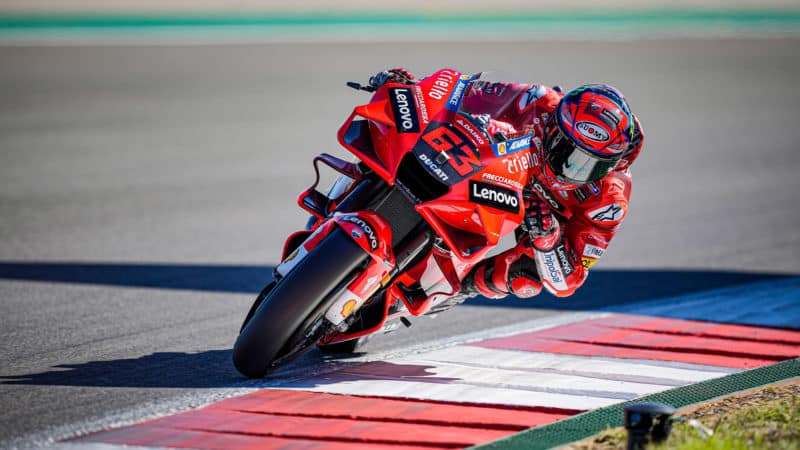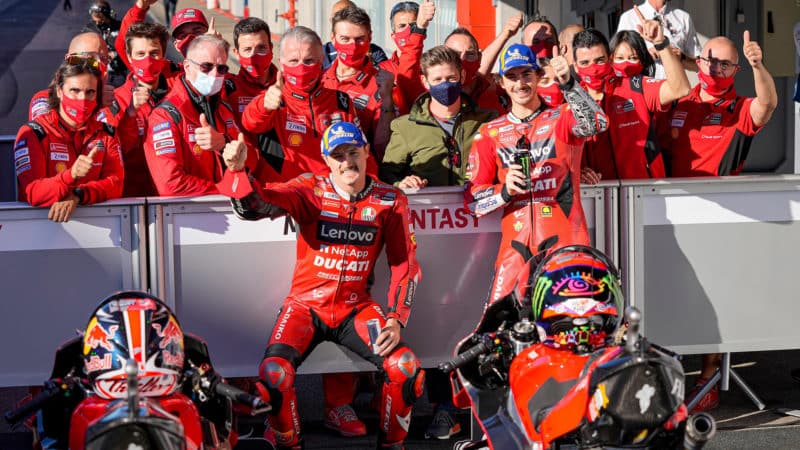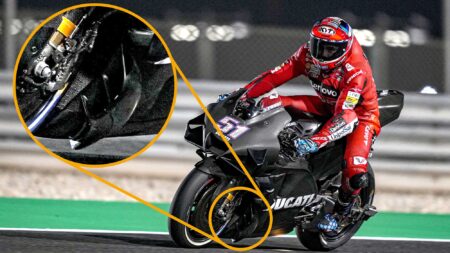Ducati’s radical aerodynamics are always the biggest talking point simply because they’re there for all to see. The Desmosedici’s big wings first appeared in 2016 in reaction to MotoGP’s first spec software, which has a very low-tech anti-wheelie programme, so the wings prevent wheelies by increasing front-end downforce, which allows riders to use full throttle sooner, which obviously improves acceleration.
The wings also help in braking and corner entry, by creating just the right amount of load on the tyres. This is another reason Bagnaia feels so good when he’s attacking corners.
But why don’t Ducati’s rivals pursue the same radical aero route pursued by the Bologna factory? Possibly because they don’t have the horsepower to spare. Aero wings inevitably increase drag, so Ducati engineers work very hard to find the best compromise between top speed, downforce and drag. And they seem to have found that compromise.
“For sure, four or five years ago we wouldn’t have performed like today,” said Ducati Corse boss Dall’Igna after Sunday’s race. “Some parts of the track we gain, others we lose, but overall Pecco’s performance was a little better than everyone else’s.
“The aero isn’t everything. In some corners the aero helps the bike enter well, but not in the slower corners, where it has no real effect. For sure it’s the general behaviour of the bike that’s most important.”
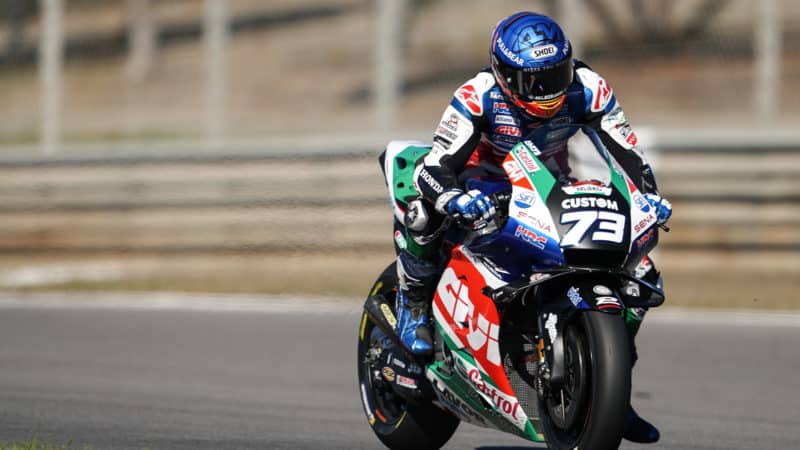
Alex Márquez made Honda’s revised RC213V sing at Portimao
LCR Honda
Not for nothing was Bagnaia at his most sublime while attacking Portimao’s daunting, high-speed Turns 9 and 12.
Team manager Tardozzi, who’s been with Ducati since the 1990s (apart from a brief stint at BMW), thinks that Bagnaia’s talent has brought the Desmosedici to a state of perfection.
“Pecco trusts himself, he trusts his feelings and finally his riding style covers some of the bike’s problems, some of the problems that were always underlying in the past. As Casey always says – focus on the bike’s good things, use them and manage the others. Pecco follows this way.
“We always had problems with the bike going wide when the rider touched the throttle and we still have this a bit, but the rider’s style helps here. Also, during this season we have had some new frames and new parts that have helped us to slowly, slowly close the gap.”
Stoner – back in the paddock for the first time since the start of the pandemic – confirmed that the old Ducatis he rode would’ve been a nightmare through Portimao’s sweeping final corner, where riders are hard on the throttle at high speed.
“Back then the bike wouldn’t turn through big, long corners – I would’ve lost half a second there every lap,” said Ducati’s only MotoGP champion, who won the title in 2007, and helped Bagnaia and Miller throughout the weekend with trackside advice.
Tardozzi acknowledges that however good the Ducati gets it will never have the strong points of the Yamaha YZR-M1, which took the riders title with Fabio Quartararo at Misano last month.
“The Yamaha will always be faster than us in changes of direction and the Yamaha will always enter the corners faster, but the Yamaha will never be faster than us on acceleration, on the straights or on the brakes,” he said. “Every bike has its good points and weak points.”
Miller was overjoyed with his first podium since June’s Catalan GP, praising his engineers above all.
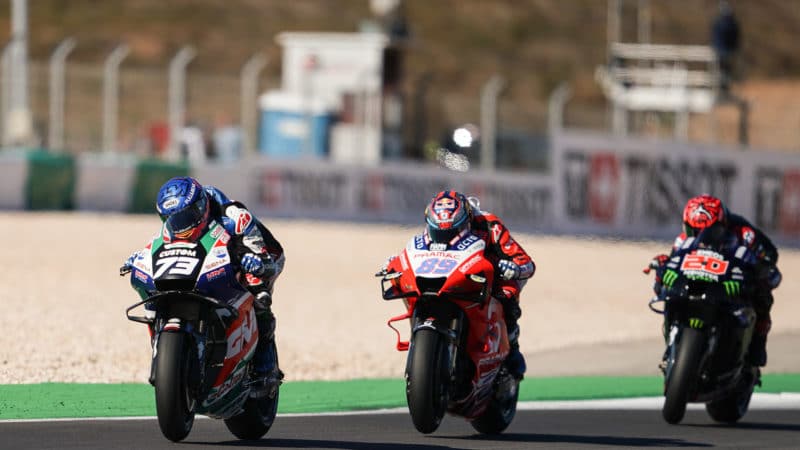
World champ Quartararo got stuck behind more powerful Ducatis and Hondas
LCR Honda
“The developments the bike has made over the last years, from the first Ducati I rode at the Valencia tests [in November 2017] to what I’m riding now is night and day,” said the Aussie. “I think that shows the process that Ducati is putting into this project. We are always the first – the first with the wings, the first with the launch device, the first with the ride-height device. Ducati are constantly, constantly pushing the limits and the others are following. So, it’s fantastic to be a part of a manufacturer like that.”
Of course things might have been different on Sunday if Quartararo hadn’t qualified on the third row, leaving the newly crowned champ mired in the pack, unable to make passes and his front tyre overheating, until he slid off. The Frenchman had started 14 of the previous 16 races from the front row – these performances were the foundation of his championship.
And what of KTM? The factory was wrong-footed at the start of 2021 by a change of front-tyre spec, which transformed the RC16 from podium challenger to nowhere bike. The factory dug itself out of that hole with amazing speed, Miguel Oliveira winning the Catalan GP. But then Oliveira got hurt and the factory’s development programme lost its way.
